
Here are 13 wonderful things to do in Marrakech, Morocco, offering a rich sensory experience:
A stunning example of Moroccan architecture, perfect for those who appreciate historical buildings and intricate designs.
Historical Significance: Ben Youssef Madrasa was once one of the largest Islamic colleges in North Africa and is a significant historical site in Marrakech. It was named after the Almoravid sultan Ali ibn Yusuf (1106–1142), who expanded the city and its influence considerably.
Architectural Marvel: The madrasa is renowned for its breathtaking architecture. It's a prime example of Moroccan-Andalusian architecture, featuring intricate tile work, elegant arches, and detailed carvings. 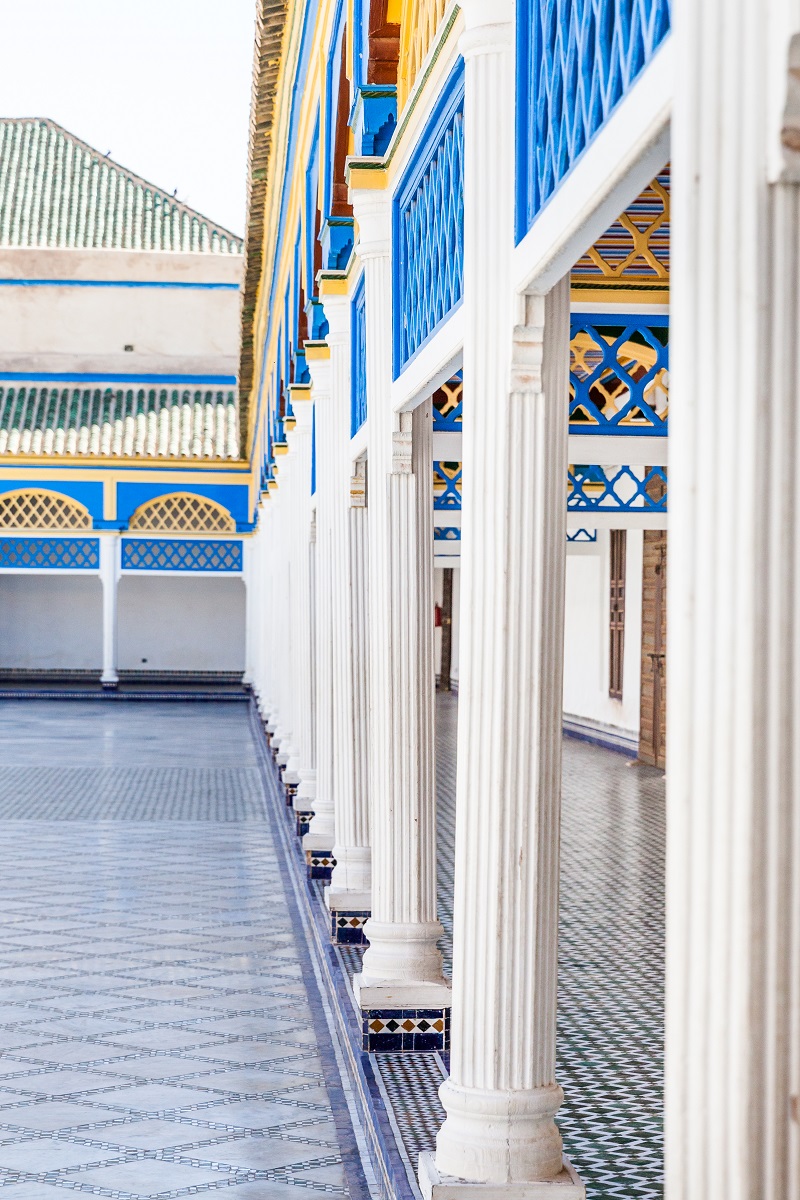
Artistic Detailing: The madrasa is adorned with zellige (colorful, geometric mosaic tilework), cedar woodwork, and marble. The attention to detail in these decorations reflects the high level of artistry and craftsmanship in Moroccan architecture.
Cultural Insight: Visiting Ben Youssef Madrasa offers insight into the educational practices of the past. The madrasa functioned as a religious school where students learned various subjects, including theology and law.
Atmospheric Courtyard: The central courtyard is a highlight, with its reflective pool providing a serene and contemplative atmosphere. This space, surrounded by student dormitories, was the heart of the madrasa.
Photographic Opportunities: For photography enthusiasts, the madrasa offers countless opportunities to capture the essence of traditional Moroccan design, from the grand courtyard to the intricate details of its doorways and ceilings.
Cultural Preservation: The madrasa is an important site for cultural preservation in Marrakech, offering visitors a glimpse into the city's rich past and Islamic heritage.
Ideal for art and photography enthusiasts, this museum showcases breathtaking street photography and portraiture, some dating back over 150 years.
Photographic Collection: The Maison de la Photographie houses an impressive collection of photographs dating back to the late 19th and early 20th centuries. These images provide a fascinating glimpse into the history and culture of Morocco.
Cultural Insight: The photographs capture various aspects of Moroccan life, from landscapes and architecture to portraits of people, offering visitors a deeper understanding of the country's heritage and social history.
Historic Building: The museum itself is located in a restored Riad, a traditional Moroccan house, which adds to the authenticity of the experience. The architecture and design of the building are as much a part of the attraction as the exhibits themselves.
Artistic Inspiration: For photography enthusiasts and artists, the museum is a source of inspiration. The collection showcases the work of both Moroccan and foreign photographers, highlighting different perspectives and styles.
Educational Experience: The museum not only displays photographs but also provides context and information about the time period and subjects captured in the images, making it an educational experience.
Rooftop Cafe: The Maison de la Photographie also features a rooftop cafe, which offers one of the best views of Marrakech. Visitors can enjoy traditional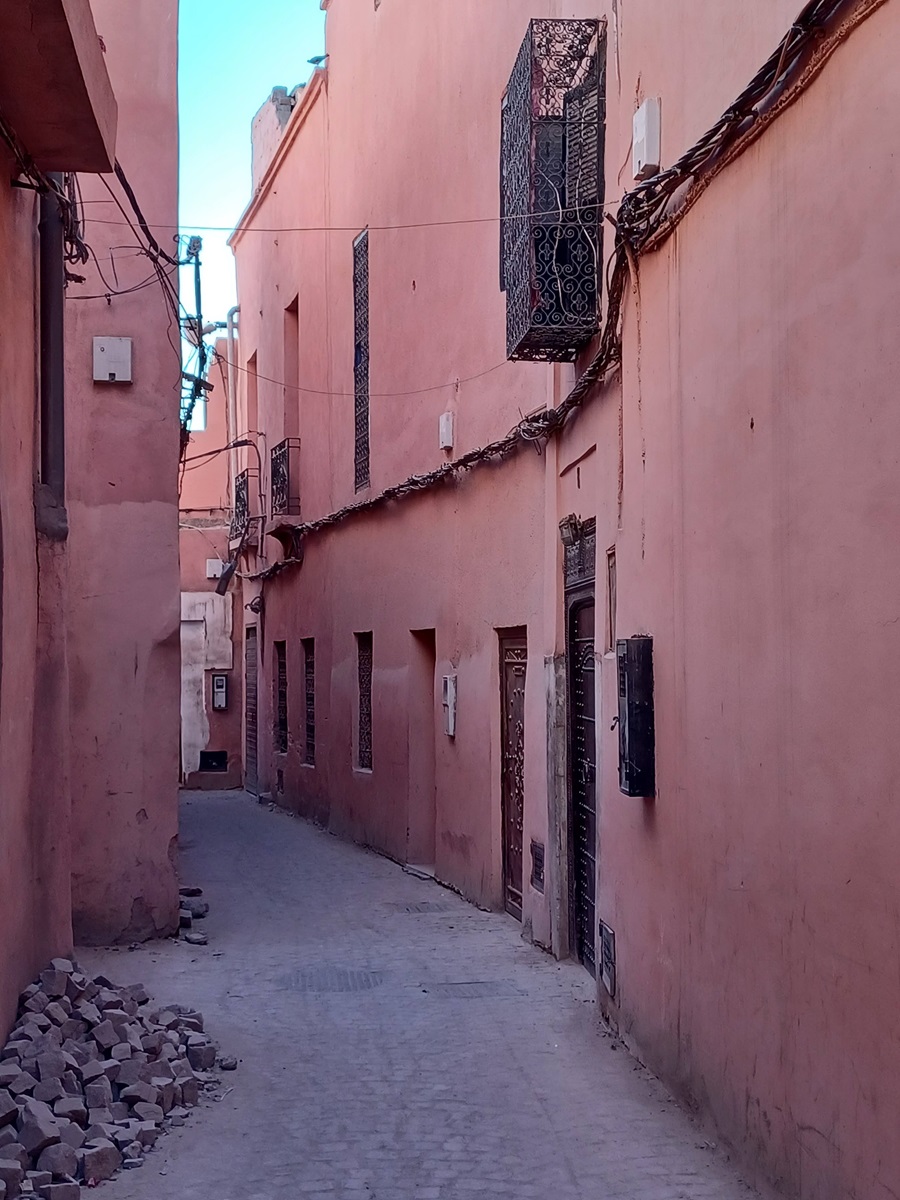 Moroccan tea and snacks while overlooking the city.
Moroccan tea and snacks while overlooking the city.
Regular Exhibitions: The museum often hosts temporary exhibitions and events, giving visitors a chance to see a variety of photographic works and engage with the local art scene.
Accessible Location: Located in the heart of the Medina, the museum is easily accessible and can be combined with a visit to other nearby attractions in Marrakech.
Consider visiting the Musée de Marrakech and Jardin Majorelle, each offering unique insights into Moroccan culture and history.
Musée de Marrakech: Located in the old Mnebhi Palace, this museum is a fine example of Andalusian architecture. It houses a collection of Moroccan art, including pottery, jewelry, and coins, as well as temporary exhibitions. The main attraction is the beautifully decorated central courtyard.
Jardin Majorelle and Berber Museum: Originally created by French painter Jacques Majorelle, the Jardin Majorelle is a stunning garden with exotic plants and a striking cobalt blue villa. Within the garden, the Berber Museum presents a rich collection of Berber objects from across Morocco, showcasing the diversity and richness of the Berber culture.
Dar Si Said Museum of Moroccan Arts and Crafts: This museum, housed in a 19th-century palace, showcases a wide range of traditional Moroccan crafts. It includes exhibits on carpentry, leatherwork, costumes, and jewelry, offering insight into the country's rich artisan traditions.
Yves Saint Laurent Museum: Dedicated to the famous French fashion designer Yves Saint Laurent, this museum displays a collection of his work, including haute couture accessories and sketches. The museum also hosts temporary thematic exhibitions and has a beautiful café and bookstore.
Bahia Palace: While not a museum in the traditional sense, the Bahia Palace is a masterpiece of Moroccan architecture and design. It offers a glimpse into the opulent life of the Moroccan nobility in the 19th century, with beautifully decorated rooms and tranquil gardens.
Museum of Photography and Visual Arts: This museum is dedicated to contemporary photography and visual arts. It hosts exhibitions from Moroccan and international artists, making it a great spot for those interested in modern artistic expressions.
Al Maaden Museum of Contemporary African Art: Located in a golf resort, this museum is dedicated to contemporary African art. It showcases a diverse collection of works from African artists, reflecting the vibrant and dynamic art scene of the continent.
Engage in a cooking class to learn traditional Moroccan cuisine, a great way to immerse yourself in the local culture.
Learn Traditional Moroccan Recipes: Cooking classes often focus on traditional Moroccan dishes such as tagines, couscous, pastilla, and various types of Moroccan salads. You'll get hands-on experience in preparing these iconic dishes.
Market Visits: Many cooking classes include a visit to a local market (souk). This is an opportunity to learn how to select the freshest ingredients, understand the use of various spices in Moroccan cuisine, and interact with local vendors.
Cultural Immersion: Cooking with a local chef or a Moroccan family allows you to immerse yourself in the local culture. It's not just about cooking; it's about understanding the Moroccan way of life, food habits, and culinary traditions.
Spice Education: Moroccan cuisine is known for its use of spices. A cooking class often includes an education segment on how to use spices like cumin,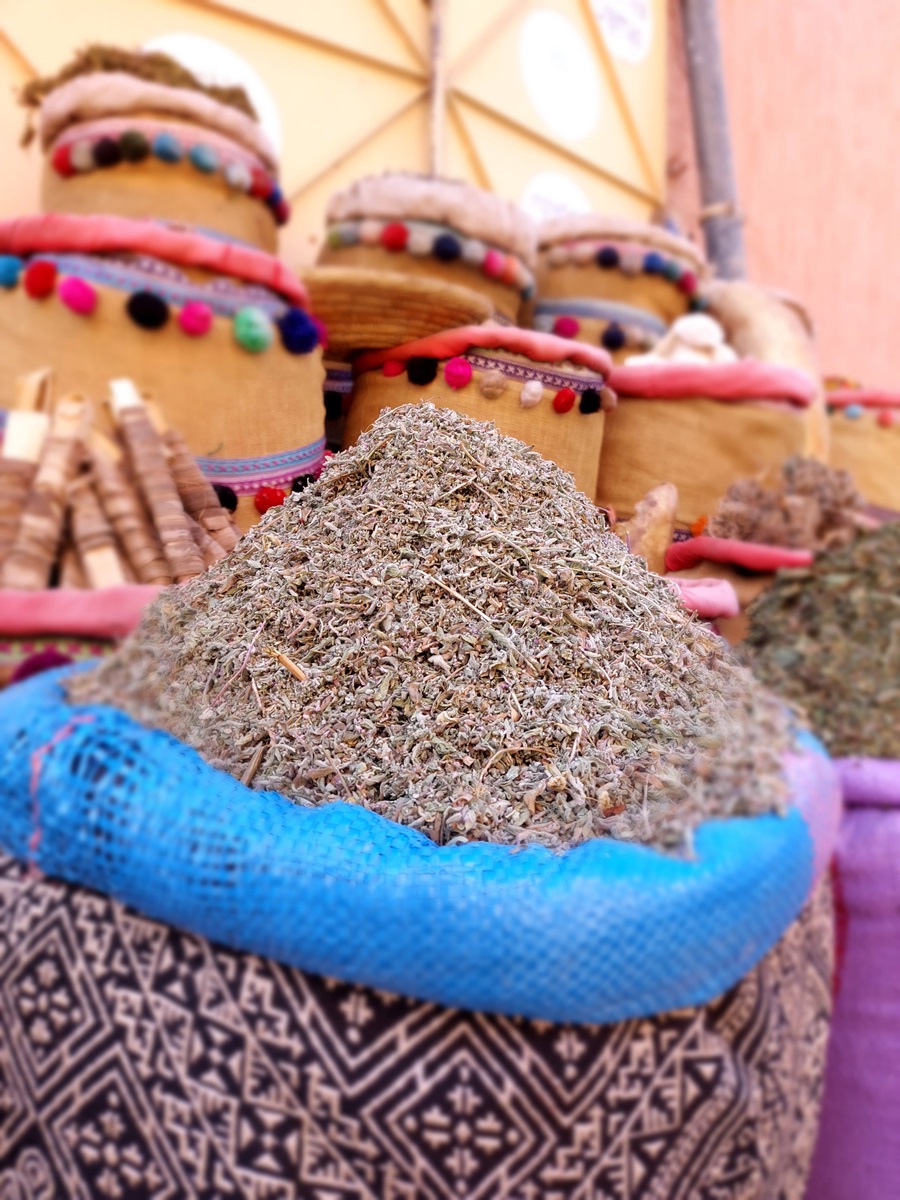 coriander, saffron, and ras el hanout, which are essential to creating authentic Moroccan flavors.
coriander, saffron, and ras el hanout, which are essential to creating authentic Moroccan flavors.
Hands-On Experience: These classes are typically very interactive. You'll get to chop, grind, and cook under the guidance of an expert, making the experience both educational and fun.
Enjoy Your Creations: After the cooking session, you'll usually sit down to enjoy the meal you've prepared, often in a beautiful setting like a traditional Moroccan riad.
Take Home Recipes:
Most classes provide recipes for you to take home, allowing you to recreate the dishes and share your Moroccan culinary adventure with friends and family.
Meet New People: Cooking classes are a great way to meet fellow travelers and locals, making for a social and enjoyable experience.
Experience the quieter side of Marrakech by enjoying a morning coffee before the city awakens.
Peaceful Start to the Day: Early mornings in Marrakech are notably quieter and more peaceful than the bustling daytime hours. Enjoying a coffee as the city awakens allows you to experience a calmer, more tranquil side of Marrakech.
Local Café Culture: Morocco has a rich café culture. Early mornings are a great time to observe local life, with residents starting their day, often accompanied by a cup of coffee and a pastry or some bread.
Traditional Moroccan Coffee: Moroccan coffee is unique, often spiced with ingredients like cardamom, black pepper, cinnamon, and nutmeg. An early morning coffee is a perfect way to experience this local specialty.
Street Scenes: Sitting at a streetside café provides an opportunity to watch the city come to life. You can observe street vendors setting up, locals going about their morning routines, and the gradual increase in the day's energy.
Cooler Temperatures: Marrakech can get quite hot during the day, especially in the summer months. Early morning is a cooler, more comfortable time to relax with a coffee outdoors.
Photography Opportunities: For those interested in photography, the early morning light offers a beautiful, soft quality that's perfect for capturing the city's architecture and street scenes.
Reflective Moments: Having a coffee in the early morning allows for a time of reflection and planning. It's a quiet moment to contemplate your day ahead, journal, or simply enjoy being in a new place.
Interaction with Locals: Early mornings in local cafés might give you a chance to interact with Marrakech residents, offering insights into local life and perhaps even some tips for your stay
Wander through the old town, a maze of markets and historic sites, offering a true taste of Marrakech's vibrant culture. 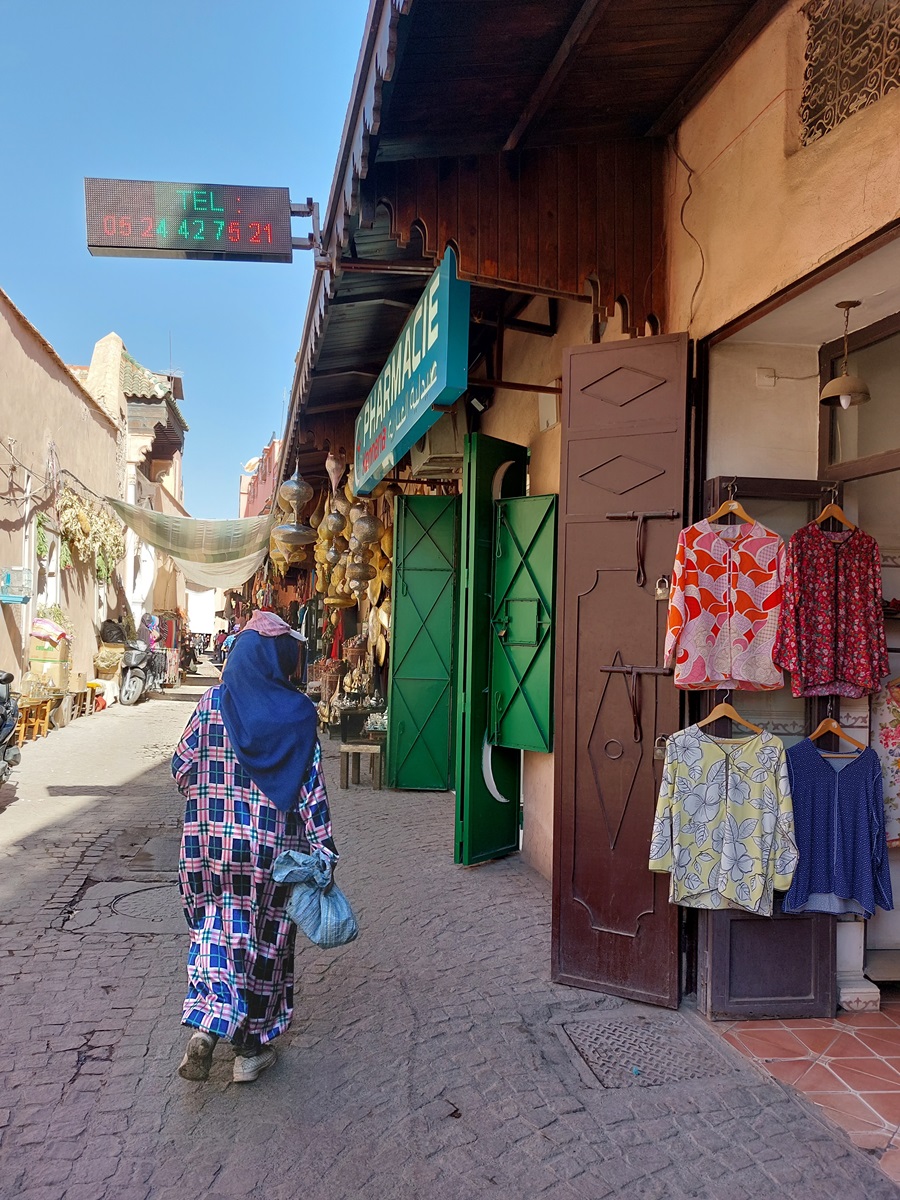
Labyrinthine Alleys: The Medina is a sprawling maze of narrow, winding alleys. Exploring these paths allows you to experience the real Marrakech, away from the structured tours and typical tourist routes.
Bustling Souks: The Medina is home to vibrant souks (markets) where you can find everything from spices and textiles to pottery and jewelry. The sensory overload of colors, smells, and sounds is quintessentially Marrakech.
Architectural Wonders: As you wander, you'll come across stunning examples of Moroccan architecture, including hidden riads, mosques, and historical buildings, each telling a story of the city's rich past.
Cultural Immersion: Getting lost in the Medina offers a deep dive into the local culture. You'll see the daily life of Marrakech's residents, observe traditional crafts, and maybe even stumble upon a local ceremony or festival.
Unexpected Discoveries: One of the joys of getting lost in the Medina is the unexpected discoveries you make – a quaint café, a beautiful artisan shop, or a street filled with stunning murals.
Local Interaction: Wandering the Medina often leads to interactions with locals, whether it's a shopkeeper, a street artist, or just residents going about their day. These interactions can be enriching and offer a more authentic experience of the city.
Photography Opportunities: For photographers, the Medina is a dream with its vibrant scenes, historic architecture, and lively street life, offering endless opportunities for capturing the essence of Marrakech.
Culinary Delights: The Medina is also a great place to sample local street food. From tagines and couscous to fresh pastries and mint tea, the flavors of Marrakech are best experienced here.
Dive into the bustling markets where you can haggle for handmade crafts, textiles, and more.
Cultural Tradition: Haggling in the souks is not just about getting a good deal; it's a cultural tradition. Engaging in this practice is a way to immerse yourself in the local way of life and interact with the artisans and shopkeepers.
Vibrant Marketplace Atmosphere: The souks of Marrakech are bustling, colorful, and full of life. Navigating through this lively environment while shopping is an experience in itself.
Unique Finds: The souks are famous for their wide range of goods, including handcrafted jewelry, leather goods, pottery, spices, textiles, and traditional Moroccan lamps. Each item has its own charm and story.
Artisanal Craftsmanship: Many items in the souks are handmade by skilled local artisans. Bartering for these goods gives you a chance to appreciate and support traditional Moroccan craftsmanship.
Learning the Art of Negotiation: Bartering is an art, and learning how to do it effectively is a skill that can be quite satisfying. It involves friendly negotiation, understanding the value of items, and sometimes walking away to get the best price.
Memorable Interaction: The process of haggling often leads to memorable interactions with locals. It's not uncommon to be offered mint tea and to engage in friendly conversation, making the shopping experience more personal.
Economic Support: By purchasing from local souks, you're directly supporting the local economy and small businesses, which is especially important in tourist-driven economies like Marrakech.
Sense of Achievement: Successfully bartering for a good price can give you a sense of achievement and makes the purchase feel even more special.
For a unique perspective, enjoy the breathtaking views of the Moroccan countryside from a hot air balloon.
Stunning Views: As the balloon ascends, you'll be treated to incredible panoramic views of Marrakech and its surroundings. The sight of the sun rising over the Atlas Mountains and illuminating the desert and the city is truly spectacular.
Unique Perspective: Seeing Marrakech from the air offers a unique perspective that you can't get any other way. It's a peaceful and awe-inspiring way to view the landscape, dotted with traditional Berber villages, palm groves, and the vast desert.
Tranquil Experience: Floating gently in the air with the first light of day provides a sense of tranquility and serenity. It's a stark contrast to the bustling streets of Marrakech and offers a moment of quiet reflection.
Photography Opportunities: For photography enthusiasts, this is a dream come true. The early morning light, combined with the stunning landscapes, makes for some incredible photo opportunities.
Celebration of Flight: After landing, many hot air balloon experiences include a traditional celebration with the flight crew, often featuring mint tea and local pastries, adding to the overall experience.
Professional Guidance: The pilots and crew are typically very experienced and knowledgeable, not only about ballooning but also about the local area, its history, and culture.
Adventure and Romance: Whether you're an adventure seeker or looking for a romantic experience, a hot air balloon ride at sunrise ticks all the boxes. It's a memorable activity for couples, families, or solo travelers.
Lifetime Memory: This is more than just an activity; it's an experience that creates lifetime memories. The combination of the stunning views, the peacefulness of the flight, and the excitement of floating above Morocco makes it truly unforgettable.
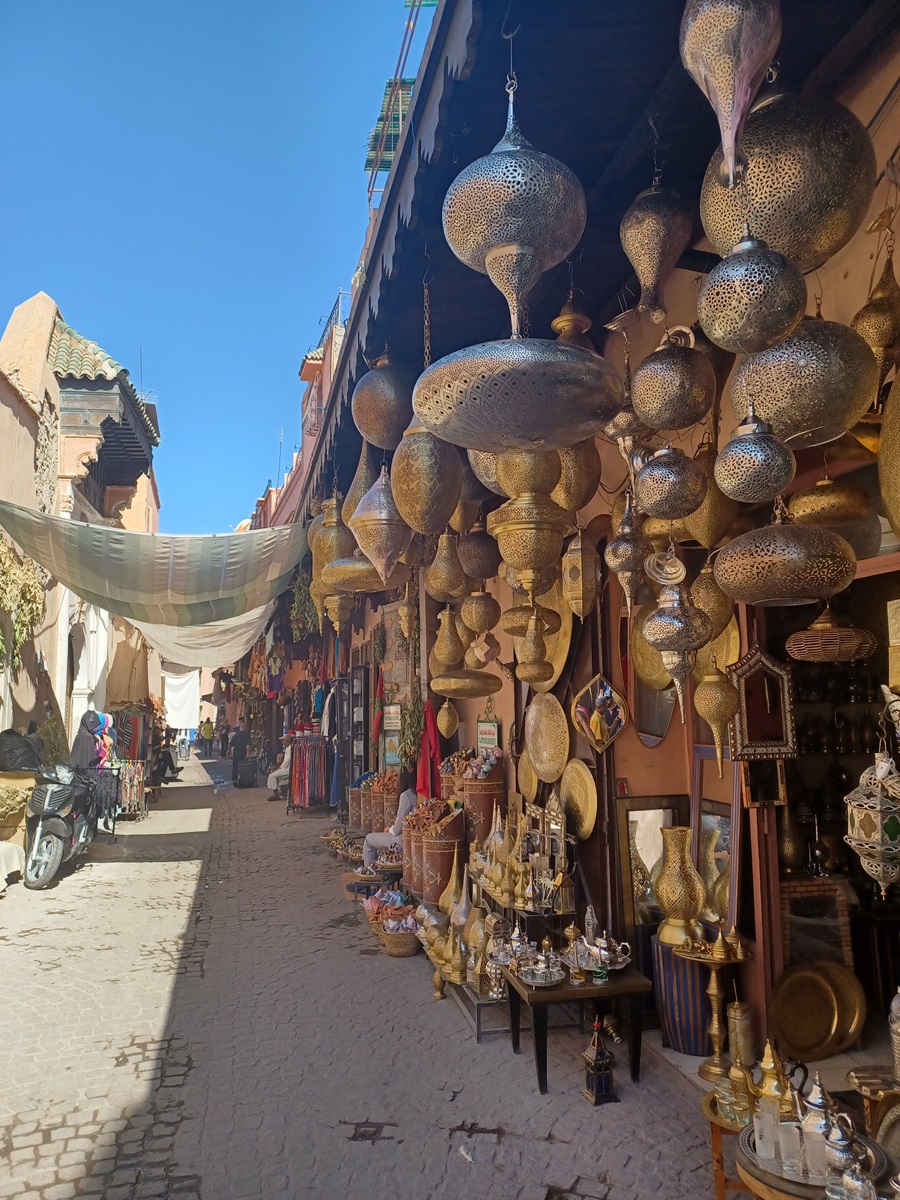
A key landmark of Marrakech, known for its impressive architecture and historical significance.
Iconic Symbol of Marrakech: The Koutoubia Mosque is the largest mosque in Marrakech and a city landmark. Its minaret is a famous symbol of the city and can be seen from miles away, serving as a navigational landmark for both locals and tourists.
Stunning Architecture: The mosque is a masterpiece of Almohad architecture, known for its distinct style. The minaret, in particular, is celebrated for its intricate decorative stone work, arches, and banding. It has inspired other buildings such as the Giralda of Seville and the Hassan Tower of Rabat.
Rich History: Built in the 12th century, the Koutoubia Mosque is steeped in history. It has stood as a witness to the changing times and dynasties over the centuries, making it a significant historical site.
Spiritual Significance: As a major place of worship, the mosque is a spiritual center for Muslims in Marrakech. The call to prayer from the minaret is a quintessential Marrakech experience.
Beautiful Gardens: Surrounding the mosque are lush gardens, which are open to the public. These gardens offer a peaceful retreat from the hustle and bustle of the city and are a great place for relaxation and contemplation.
Cultural Insight: Visiting the Koutoubia Mosque provides insight into Islamic culture and religion in Morocco. It's a reminder of the city's rich Islamic heritage.
Photography Opportunities: The mosque, with its impressive minaret and beautiful gardens, is a popular subject for photographers, capturing the essence of Marrakech's architectural beauty.
Accessible Location: Located near Djemaa el-Fna, Marrakech's famous square, the mosque is easily accessible and often included in city tours and walking routes.
Indulge in a traditional Moroccan hammam for relaxation and a unique cultural experience.
Cultural Tradition: The hammam is an integral part of Moroccan culture, serving as a place for socializing, relaxation, and ritual cleansing. It offers a unique insight into local customs and lifestyle.
Relaxation and Rejuvenation: Hammams provide a deeply relaxing experience. The combination of warm steam, exfoliation, and massage helps to soothe muscles, improve circulation, and rejuvenate the body and mind. 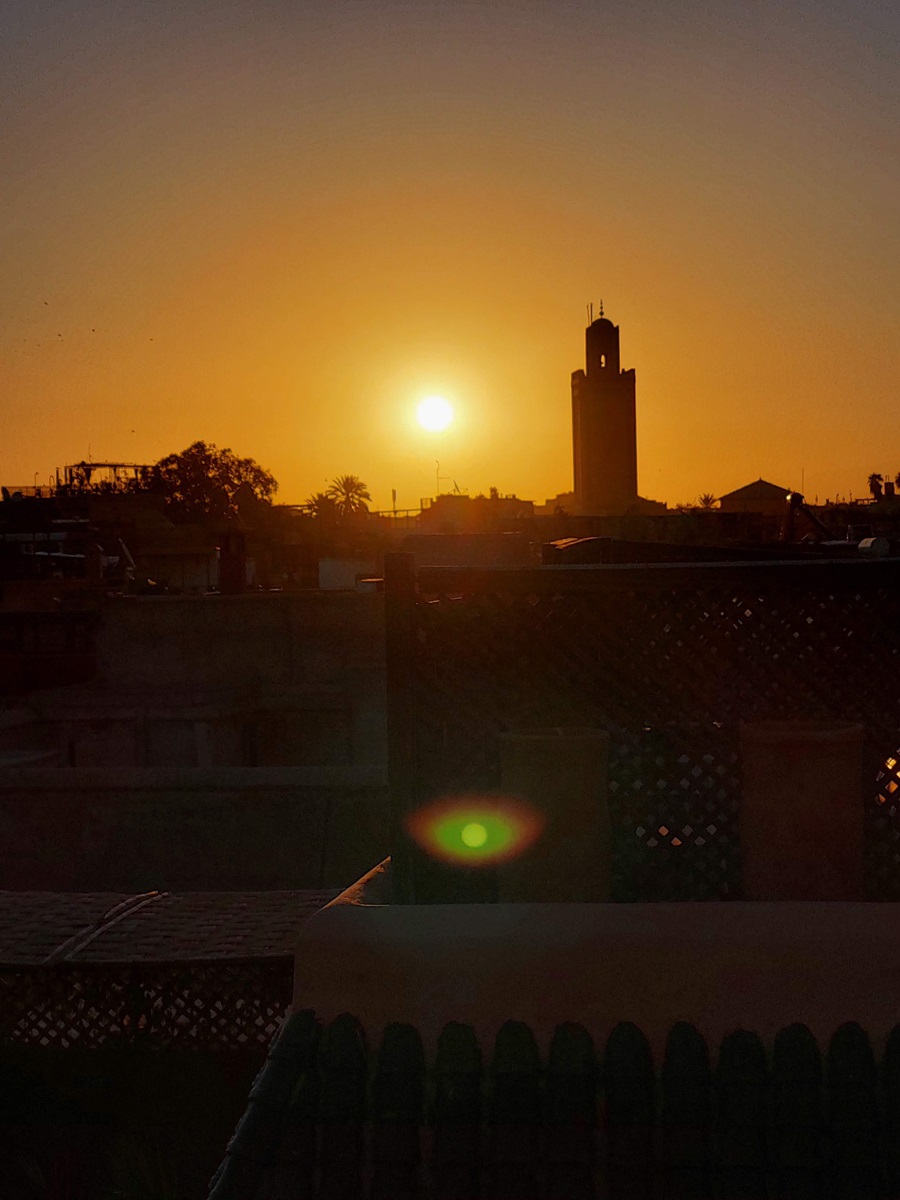
Skin Cleansing and Exfoliation: One of the key elements of the hammam is the traditional body scrub, usually performed with a 'kessa' glove and 'savon beldi', a black soap made from olives. This process removes dead skin cells, leaving your skin feeling incredibly soft and refreshed.
Authentic Moroccan Experience: Opting for a hammam gives you the opportunity to engage in an authentic Moroccan wellness practice, different from typical spa experiences in other parts of the world.
Variety of Options: Marrakech offers a range of hammam experiences, from luxurious spas in high-end hotels to traditional public bathhouses. This variety caters to different preferences and budgets.
Health Benefits: The hammam experience is not only about cleanliness; it also has health benefits, including detoxification, improved sleep, and relief from muscle pain and stiffness.
Social Experience: In traditional Moroccan society, hammams are a communal experience, particularly for women. It's a place for social interaction and bonding, although many places now offer private sessions for tourists.
Mental Wellness: Beyond the physical benefits, the hammam experience is also a form of mental relaxation, offering a break from the hustle and bustle of travel and a chance to unwind in a serene environment.
Discover the history and grandeur of this 16th-century palace.
Architectural Splendor: Palaces from the 16th century often showcase exquisite architectural designs, including intricate tile work, carved wood, stucco art, and grand courtyards. These elements reflect the artistic and architectural advancements of the period.
Historical Significance: A 16th-century palace is a treasure trove of history. It may have been a residence for royalty or nobility, and exploring it can provide insights into the political, social, and cultural narratives of the time.
Cultural Insights: Such palaces often display elements of the cultural and artistic heritage of the region. They might house historical artifacts, traditional furnishings, and artworks that offer a glimpse into the lifestyle of the era.
Gardens and Grounds: Many of these palaces are renowned for their expansive and meticulously designed gardens, which often include fountains, walkways, and a variety of flora. These gardens were as much a part of the grandeur as the palace itself.
Stories and Legends: Exploring an old palace is like walking through the pages of history. Guides or informational plaques often share intriguing stories and legends associated with the palace, its inhabitants, and its role in historical events.
Photographic Opportunities: The blend of architectural beauty and historical ambiance makes these palaces a photographer's delight, offering countless opportunities to capture the essence of a bygone era.
Educational Experience: For history buffs, students, or anyone interested in learning about the past, visiting a 16th-century palace is an educational experience, providing a tangible connection to the history studied in books.
Preservation and Restoration Efforts: Observing restoration and preservation efforts can be fascinating, highlighting the techniques and challenges involved in maintaining such historic structures
Learn about the various options for getting around the city, from buses to taxis.
Diverse Modes of Transport: Marrakech offers various modes of transportation, including buses, taxis (petit taxis and grand taxis), horse-drawn carriages (caleches), and for the more adventurous, motorbikes and bicycles. Each mode offers a different experience of the city.
Petit Taxis for Short Journeys: Petit taxis are small, typically painted in a distinct color (like beige), and ideal for short trips within the city. They are metered, so ensure the meter is running to avoid overcharging.
Grand Taxis for Longer Distances: Grand taxis are larger vehicles, often older Mercedes sedans, used for longer journeys or trips outside the city. They have set rates for specific destinations and are usually shared with other passengers.
Buses for Economical Travel: Public buses are the most economical way to travel around Marrakech. They cover extensive routes but can be crowded and less comfortable than taxis.
Caleches for a Traditional Experience: Horse-drawn carriages, known as caleches, are a charming and traditional way to see the city, especially popular for tours around the Medina and major sights.
Walking for Short Distances: Many of Marrakech's attractions, particularly in the Medina, are best explored on foot. Walking allows you to fully immerse yourself in the city's bustling atmosphere.
Renting Bikes or Motorbikes: For those comfortable with navigating busier streets, renting a bike or motorbike can be an exhilarating way to explore Marrakech and its surroundings.
Hiring a Private Driver: For convenience and comfort, especially when traveling to areas outside the city or for day trips, hiring a private driver can be a good option.
Navigational Challenges: Marrakech's streets can be chaotic and crowded, with a mix of vehicles, pedestrians, and sometimes animals. It's important to be 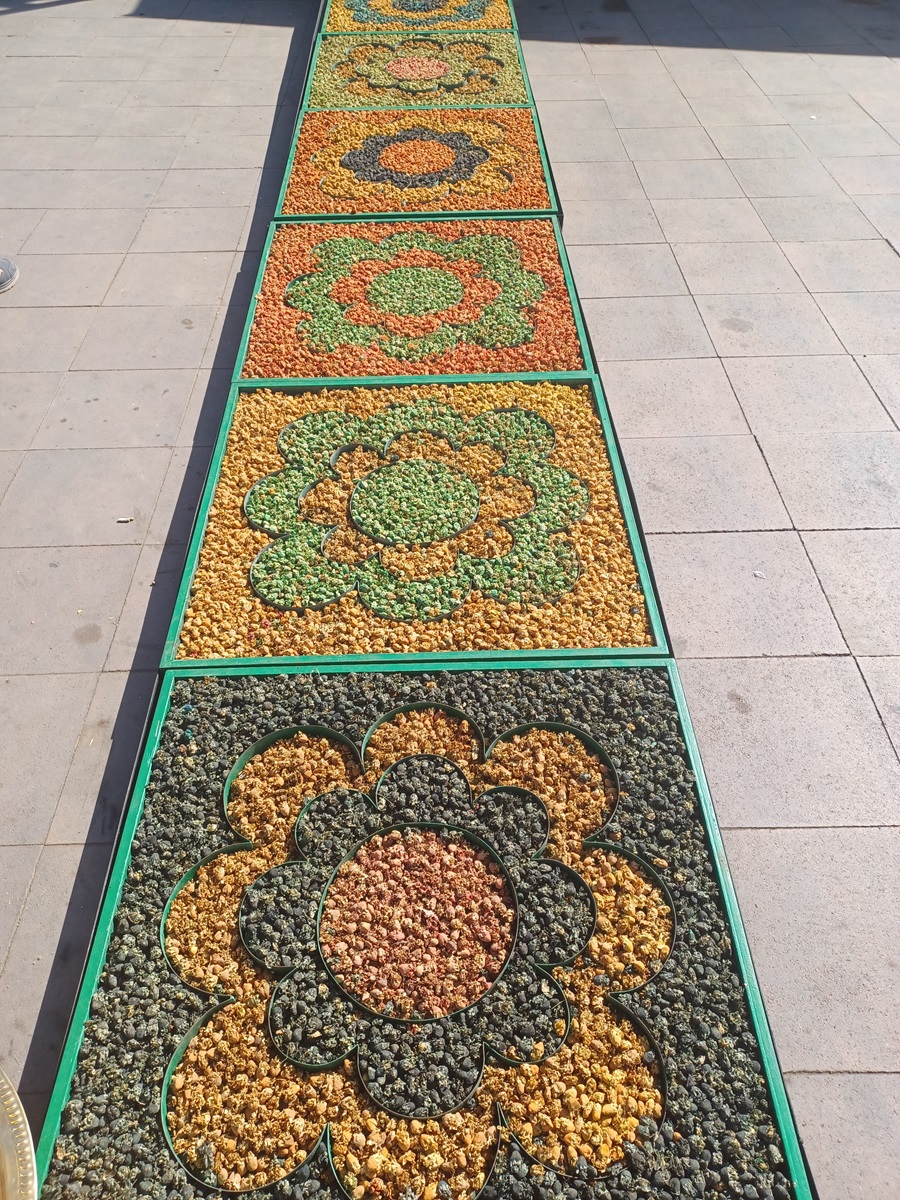 cautious, especially when crossing streets or navigating narrow alleys in the Medina.
cautious, especially when crossing streets or navigating narrow alleys in the Medina.
Cultural Experience: Using local transportation is not just about getting from point A to B; it's a way to experience the local culture and everyday life in Marrakech.
Consider taking part in guided tours, workshops, and food tours to deepen your understanding of Marrakech's culture and history.
Expert Insights: Guided tours are led by knowledgeable guides who provide valuable insights into Marrakech's history, culture, and landmarks. They often share stories and information that you might not discover on your own.
Cultural Workshops: Participating in workshops, such as cooking classes, traditional Moroccan crafts, or calligraphy, offers hands-on experience in the local arts and traditions. It's a great way to engage with the culture actively.
Customized Experiences: Many guided tours cater to specific interests, such as food tours, historical tours, photography walks, or shopping in the souks. This allows for a more personalized experience tailored to your interests.
Social Interaction: Tours and workshops provide opportunities to meet and interact with fellow travelers, which can be especially enjoyable for solo travelers or those looking to share experiences with others.
Access to Hidden Gems: Guides often know about hidden spots and unique attractions that are not widely known to tourists. This can include off-the-beaten-path locations, lesser-known historical sites, or local eateries.
Language Benefits: For non-Arabic or French speakers, having a guide can help overcome language barriers, making interactions with locals and navigation around the city easier.
Safety and Convenience: Guided tours can provide a sense of security and convenience, especially in a city like Marrakech where the bustling medinas and souks can be overwhelming for first-time visitors.
Learning New Skills: Workshops can be a platform for learning new skills, whether it's cooking Moroccan cuisine, learning about traditional Moroccan tile-making, or understanding the intricacies of Moroccan textiles.
Supporting Local Economy: By participating in tours and workshops, you're directly contributing to the local economy and supporting the livelihoods of guides, artisans, and small business owners.
Memorable Experiences: These guided experiences often create memorable moments, whether it's the joy of successfully preparing a local dish or the thrill of discovering a part of Marrakech you wouldn't have found on your own.